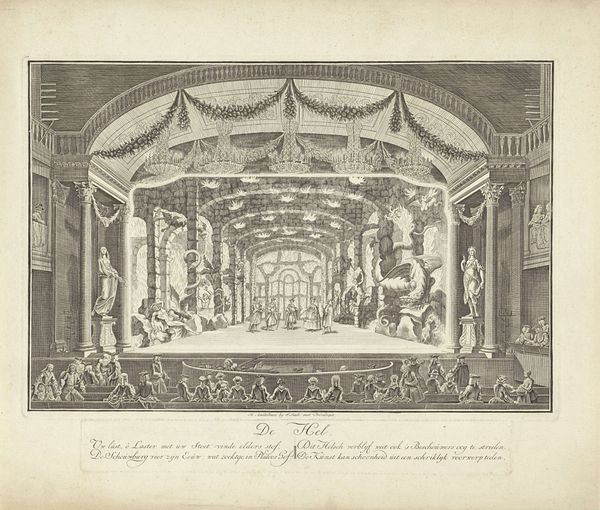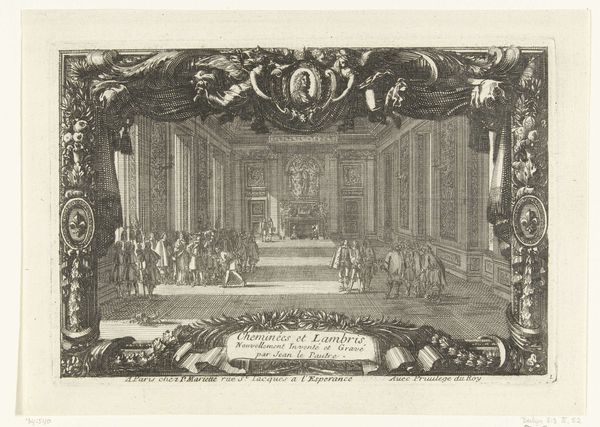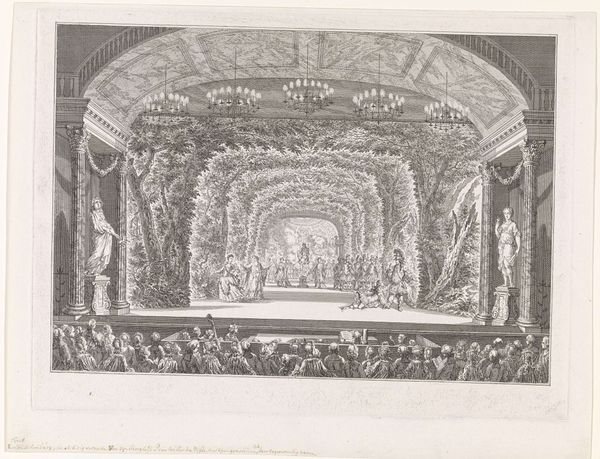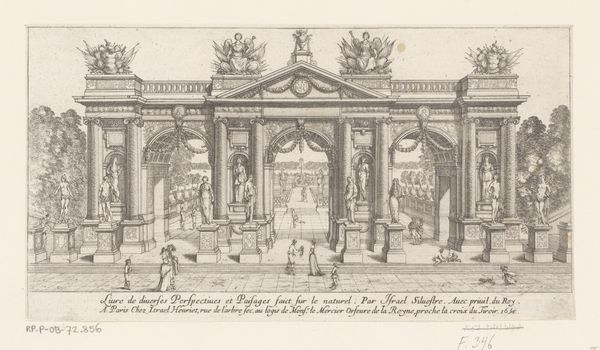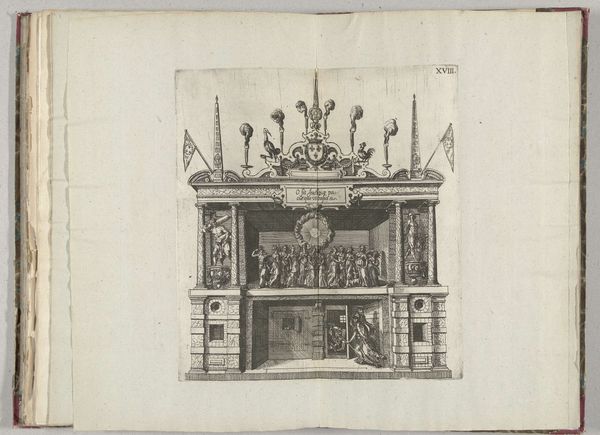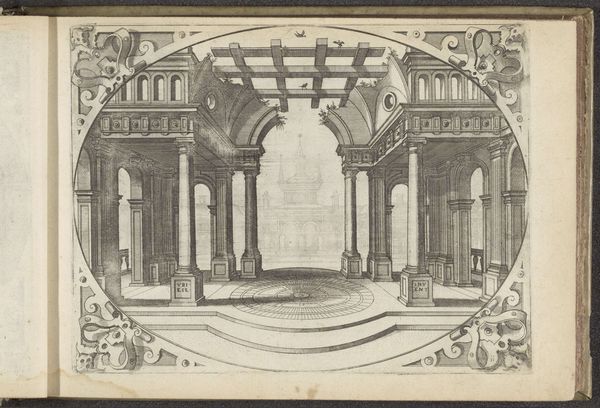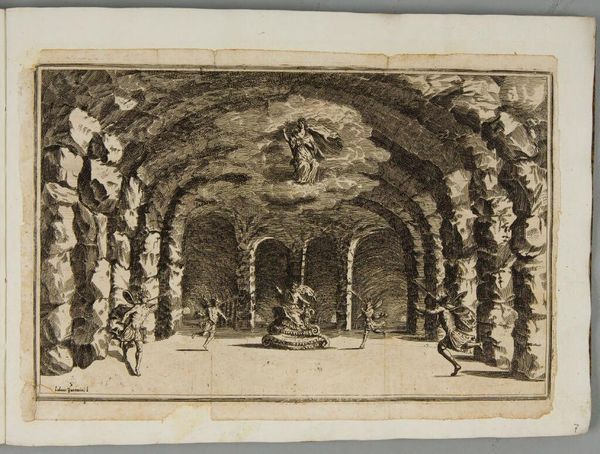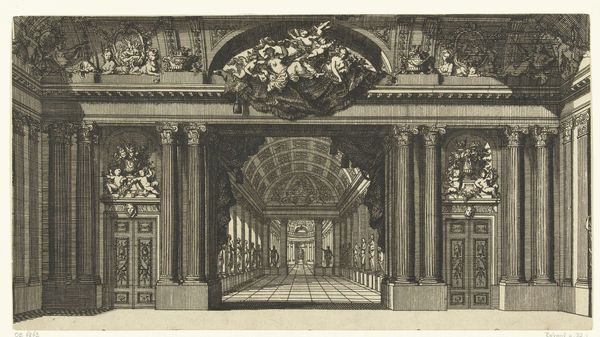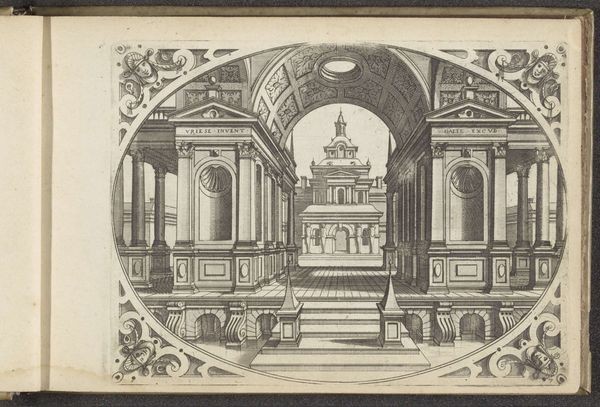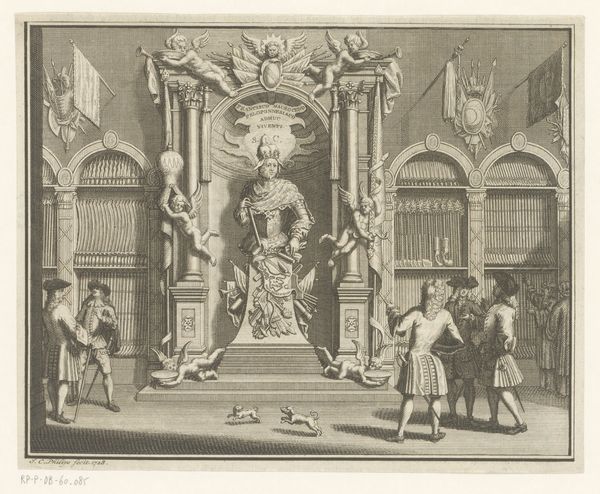
print, paper, engraving
#
baroque
# print
#
paper
#
cityscape
#
history-painting
#
engraving
Dimensions: height 198 mm, width 484 mm
Copyright: Rijks Museum: Open Domain
Curator: This is an engraving dating to around 1702-1703, titled "Wapenmagazijn in de Bastille te Parijs," or "Armory in the Bastille in Paris," created by an anonymous artist. Editor: It feels overwhelmingly austere. The precision of the lines and the sheer volume of weapons on display evoke a chilling sense of power and control. Curator: Indeed. The artist uses precise lines to construct a visually dense interior view of the armory within the Bastille, creating an architectural perspective with a strong sense of depth. The visual rhythm of the repetitive armaments amplifies the rigid formal composition. Editor: And the Bastille, of course, has a charged symbolic value, representing royal authority and the suppression of dissent. Doesn't the overwhelming display of weaponry emphasize the imbalance of power, with ordinary citizens at the mercy of the state’s military strength? The staged poses of those few figures amid the arsenal amplify the impression of calculated might. Curator: Perhaps. Note the visual weight and balanced composition though. The symmetrical arrangement directs the gaze towards the distant vanishing point and suggests spatial harmony and controlled, rational organization that echoes the Baroque style’s emphasis on order. Editor: But what does such “order” signify in this context? The rational architecture contrasts brutally with its actual function: an arsenal created to assert sovereign violence. Can we look past how spaces like this, documented here, later sparked revolutions as a symbol of oppressive power? Curator: It’s difficult to look past history of course. What's most evident from the engraving itself is the tension between artifice and utility. Consider the elaborateness of the architecture. Even a place dedicated to arms is ornamented, revealing much about the aristocratic patronage of art and craft. Editor: It highlights the way visual culture served to bolster state power. This engraving reveals how the aestheticization of force could contribute to the perception and maintenance of social hierarchies and control. Curator: A potent point to conclude our dialogue. We can see the work prompting layered dialogues that underscore not only its inherent order but its deeper resonances regarding how structures impact lives. Editor: A necessary step, particularly when grappling with images tied to sites of such loaded history. This image compels us to think critically about the complex intersection of aesthetics, power, and resistance.
Comments
No comments
Be the first to comment and join the conversation on the ultimate creative platform.
